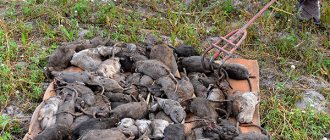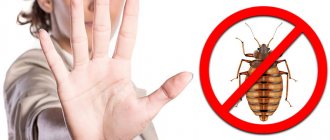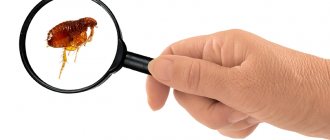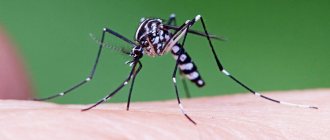The house mouse and gray rat have been “accompanying” humans since time immemorial - it is thanks to their ability to coexist with bipeds that these rodents have spread throughout the world and today are one of the most numerous species of mammals.
Alas, this neighborhood is not always favorable for humans. Mice and rats cause damage to crops, and cause the main damage by eating and contaminating food and animal feed with their excrement, as well as damaging furniture, electrical wiring, clothing, books and other items that they sharpen their teeth on.
But that's not all. Gray rodents are carriers of many infections that are dangerous and even in some cases fatal to humans. A number of such infections are transmitted through their urine and feces, others through blood-sucking arthropods that easily pass from mice to humans.
Let's talk in more detail about possible diseases transmitted by mice and rats to humans.
Hemorrhagic fever with renal syndrome (HFRS)
Hemorrhagic fever with renal syndrome (HFRS) is a group of clinically similar diseases caused by hantaviruses of the family Bunyaviridae.
Symptoms of Hemorrhagic Fever with Renal Syndrome (HFRS) usually develop within 1–2 weeks after exposure to infected materials, but in rare cases can take up to 8 weeks to develop. Initial symptoms appear suddenly and include severe headaches, back and abdominal pain, fever, chills, nausea and blurred vision. People may have facial flushing, sore or red eyes, or a rash. Late symptoms may include low blood pressure, acute shock, and acute renal failure, which can cause severe fluid overload. The severity of the disease varies depending on the virus causing the infection. Hantaan and Dobrava virus infections usually cause severe symptoms, while Seoul, Saaremaa and Puumala virus infections are more mild. Full recovery from rat disease may take weeks or months.
Hemorrhagic fever with renal syndrome occurs throughout the world. Haantan virus is widespread in East Asia, especially in China, Russia and Korea. Puumala virus is found in Scandinavia, Western Europe and Western Russia. The Dobrava virus is found mainly in the Balkans, while the Seoul virus is found throughout the world. The Saaremaa virus is found in Central Europe and Scandinavia. In America, hantaviruses cause another disease known as hantavirus pulmonary syndrome.
Hantaviruses are carried and transmitted by rodents. People can become infected with these viruses and develop hemorrhagic fever with renal syndrome after inhaling aerosolized urine, droppings, or saliva from infected rodents or after coming into contact with dust from their nests and cages. Infection can also occur when contaminated urine or other materials come into direct contact with broken skin or mucous membranes of the eyes, nose, or mouth. Additionally, people who work with live rodents can become infected with hantaviruses through the bites of infected rodents. Transmission from one person to another can occur but is extremely rare.
The gray or Norway rat (Rattus norvegicus) is a reservoir for the Seoul virus.
Which doctor will help?
Many people, in case of bites from rats or other animals, turn to doctors who help diagnose and subsequently get rid of side symptoms. But the causes of diseases and their origins must be treated first.
If you were bitten by a rat or mouse or someone else, or you constantly smelled the smell of carrion at home, and after that you felt unwell, then you urgently need to run to an infectious disease doctor.
There is no need to wait for the disease to manifest itself. With some diseases, such as the bubonic plague, you cannot hesitate, because the risk of dying or being near death is extremely high. Fever, rash, elevated temperature - all this indicates that the disease has already entered the active phase and the minutes are counting.
It is recommended to see a surgeon with an infectious disease specialist to treat ruptured bite wounds or ulcers.
Leptospirosis in rats
Leptospirosis is a bacterial disease that affects people and animals. Caused by bacteria of the genus Leptospira. People experience great variability in symptoms, some of which may be mistaken for other diseases. Some infected patients have no symptoms at all.
Left untreated, leptospirosis can lead to kidney damage, meningitis (inflammation of the lining of the brain and spinal cord), liver failure, respiratory distress, and even death.
The bacteria that causes leptospirosis is spread in the urine of infected animals. Urine can get into water or soil, and bacteria can survive there for weeks or even months. Many species of wild and domestic animals are carriers of leptospirosis. Carriers can be (not a definitive list): cattle, pigs, horses, dogs, rodents, wild animals.
Infected animals may not show clinical signs. Infected animals may continue to shed bacteria into the environment continuously or intermittently for months or even years.
People can become infected through:
- Contact with urine (or other body fluids excluding saliva) from infected animals
- Contact with water, soil or food contaminated with urine from infected animals
Bacteria can enter the body through the skin or mucous membranes (eyes, nose or mouth), especially if the skin is broken. Drinking contaminated water can also cause infection. Outbreaks of leptospirosis are usually caused by drinking contaminated water, such as after a flood. Person-to-person transmission is rare.
What diseases do mice carry?
What diseases do mice carry?
Although mice are smaller than rats and seem to look more harmless, they cause no less problems. Mice carry diseases no less dangerous to human health.
Mouse typhus
It is transmitted not only by mice, but by rats. After contracting the infection, complex symptoms occur, including fever, high temperature, coughing and choking attacks, severe headaches and muscle pain. If an elderly person or one with low immunity is infected, the disease can be fatal for them.
Venezuelan encephalomyelitis
House mice and hamsters are often infected with the virus. The most susceptible category of people are pregnant women and the unborn baby, since if the mother is bitten by a rodent during intrauterine development, the fetus may develop congenital abnormalities. The child may be born with mental disabilities.
Hantavirus infection
During rising summer and autumn temperatures, there is an outbreak of growth in mouse populations. This is when the infection spreads.
Warm climatic conditions are favorable factors for it. Infection occurs through airborne droplets or through objects contaminated with mouse feces.
Tularemia
Carried by both types of rodents. Due to the high population density of mice, infection can be transmitted through the air and contaminated food and water.
Pseudotuberculosis
Infectious agents can remain dormant for a long time. The same applies to food products that are contaminated with bacteria.
For example, storing vegetables over the winter can trigger an outbreak of pseudotuberculosis because they are a treat for rats and mice, which leave their feces on them.
Rabies
A very dangerous infection. It can cause inflammation of the brain and spinal cord. It is transmitted through household contact and through rodent bites.
Streptobacilosis
The simplest bacteria affect the human brain and lymphatic system. Transmitted by an animal bite.
Read on the topic - Basic concepts of the rodent control process (expert opinion)
Lymphocytic choriomeningitis
Lymphocytic choriomeningitis (LCM) is an infectious viral disease. Transmitted by rodents, the causative agent is lymphocytic choriomeningitis virus (LCMV), a member of the family Arenaviridae, which was originally isolated in 1933.
The main host of the LCM virus is the common house mouse, Mus musculus. Infection in house mouse populations may vary depending on geographic location. House mice can transmit the virus throughout their lives without showing any signs of illness. Other rodents, such as hamsters, are not natural reservoirs but can become infected with lymphocytic choriomeningitis virus LCM from wild mice at a breeder, pet store, or home. Humans are most likely to become infected with lymphocytic choriomeningitis virus from house mice, but there is also evidence of infection from other domestic rodents.
Lymphocytic choriomeningitis virus disease has been reported in Europe, America, Australia and Japan and can occur where infected rodents are found.
Lymphocytic choriomeningitis most often presents with neurological symptoms, as the name suggests, although asymptomatic infection or mild fever is the more common clinical presentation.
In infected people, the first symptoms usually appear 8 to 13 days after exposure to the virus. The initial phase can last up to a week and usually begins with one or more symptoms: fever, malaise, lack of appetite, muscle pain, headache, nausea and vomiting. Other symptoms that appear less frequently include sore throat, cough, joint pain, chest pain, testicular pain, and parotid gland pain. In addition, pregnancy-associated infection is associated with congenital hydrocephalus, chorioretinitis, and mental retardation.
Prevention of diseases from rodents
The main rules of prevention are extremely simple:
- Fight rodents in every possible way. If a mouse or rat appears in the house, you need to get rid of it.
- Prevention of rodents. The best protection against rats and mice is not a domestic cat, but the EcoSniper rodent repeller or exterminator. Traps, stranglers and other devices need to be emptied, and therefore there is a high risk of infection. Repellers work to expel pests and reduce the risk of infection by 100%.
- Observe safety precautions when cleaning premises and working in the garden. Gloves, masks, boots - protection is needed for all parts of the body, including the respiratory organs and eyes.
The best protection against rats and mice is to stay away from them yourself and not allow pests into your home or apartment. And this is where repellers and exterminators will be useful. They work inside and outside the house, in areas of any size, and will be the only possible prevention of fatal diseases.
Remember that rodent control is the only measure that can protect human health. And in this “war” there can be no trifles, but with EcoSniper repellers the “battle” will be 100% winning and safe for humans.
Rat bite disease
Rat bite disease (RBF) is an infectious disease that can be caused by two different bacteria. Streptobacillus moniliformis is a small polymorphic, gram-negative aerobic bacillus, or spirochete Spirillum minus. Rat bite disease, caused by Streptobacillus moniliformis, is more common in North America, while Sodoku rat bite disease, caused by Spirillum minus, is found primarily in Asia. People usually become infected from infected rodents and by consuming contaminated food or water. Without treatment, rat bite disease (RBF) can be a serious or even fatal illness.
There are several ways of infection. The most common are:
- Bites or scratches from infected rodents (such as rats, mice, and gerbils)
- Handling sick rodents (even without a bite or scratch)
- Consuming food or drinks contaminated with bacteria
Rat bite disease is not spread from one person to another. Symptoms of rat bite disease vary depending on the pathogen.
Streptobacillus moniliformis (Streptobacillosis) causes fever, vomiting, headache, muscle pain, and rash. Symptoms usually appear 3–10 days after exposure to an infected rodent, but may take up to 3 weeks to appear. By this time, any bite or scratch will usually heal.
Within 2 to 4 days after the fever starts, a rash may appear on the arms and legs. Then one or more joints may become swollen, red, or painful.
Spirillum minus (Sodoku disease) causes fever (which may recur repeatedly), ulcers in the area of the bite, swelling around the wound, swollen lymph nodes, and a rash (occurs after the wound has partially healed). These symptoms usually occur 7 to 21 days after exposure to an infected rodent.
Symptoms associated with Haverhill fever (a rat bite disease contracted by consuming contaminated food or water) may differ from those associated with bites and/or scratches. The most noticeable differences may include more severe vomiting and sore throat.
Rat (endemic) typhus
Unlike epidemic typhus, the picture of which is usually presented when this disease is mentioned, the main carrier of this type of disease is not lice, but the same rat fleas that live on intermediate hosts - mice and rats.
The causative agent of typhus is intracellular parasites, special bacteria of the genus Rickettsia. Once in the human body after the bite of a flea carrier, the bacteria multiply in the lymph nodes, and then are released into the bloodstream and spread throughout the body. First of all, they damage the inner surface of blood vessels, which leads to clinical changes in many systems - from the nervous to the circulatory. The course of the disease is characterized by skin rashes, a sharp increase in temperature, fever, headaches and back pain, retardation of consciousness, as well as associated complications.
In general, rat typhus is milder than its epidemic variety and in our time is no longer fatal. It is found in both hemispheres, in regions with a fairly mild climate. However, today, for example, in the United States, about 40 cases of this disease are registered annually - mainly in the summer and mainly among rural residents.
For the prevention of rat typhus, control of rodent carriers is extremely important.
- 10 ideas on how to get rid of mice in a country house (only proven means!)
Rodent control methods that will make them capitulate.
How are pathogens transmitted?
Even if a person has never been bitten by a mouse, this does not mean that he is out of the risk zone. The variety of ways in which disease can be transmitted from mice is truly amazing.
You can become infected in the following ways:
- consume food or water contaminated with feces of a sick animal;
- inhale dust containing fur and droppings;
- in direct contact with a decomposing rodent corpse;
- immediately after the bite.
You can even get infected from your pet.
Some viruses are carried by ticks and fleas that feed on the blood of an infected mouse. Also, a cat that has eaten an infected rodent can itself become a carrier of the disease.
Aliens
The ancestors of modern rats appeared about 35 million years ago. Rodents similar to modern ones spread across Europe at the end of the last millennium, they migrated from Arabia, and there from Central Asia and Southern China. With the development of navigation, the hardiest ones - black rats . They began to spread throughout the cities catastrophically quickly and destroyed their more intelligent relatives.
The black rats did not stop there and switched to people, infecting them with a deadly disease - in the middle of the 14th century, the “Black Death” - the plague - broke out in Europe. As a result of almost decades of epidemic, about 25 million people died - a third of Europe. Epidemics broke out in the 18th, 19th, and 20th centuries.
Gray rat . Meanwhile, a new species of rat was spreading across Europe - the gray one. She moved from East Asia and began to exterminate the black one. Rats appeared in Russia at the turn of the 17th–18th centuries, and then they practically did not reach Central and Eastern Siberia. But during one of the most famous rat invasions - besieged Leningrad - rodents literally filled the city. There was no one to fight them, since the dogs and cats were eaten by people. After the blockade was broken, they began to figure out how to cope with the invasion, and they brought 4 wagons of smoky cats from Yaroslavl, which were considered the best rat catchers. And then about 5 thousand more cats from Siberia, who helped finally get rid of rodents.
Rat. Photo: Pixabay
Infection process
Many people mistakenly believe that they can become infected with some disease from rats only through a direct bite, but this statement is not entirely true. Human infection can occur in the following ways:
- by a bite (diseases transmitted in this way occur in a more complex form and can be treated under the supervision of a doctor);
- when eating food that has been touched by rodents;
- through rat fleas (insects that parasitize rats are often carriers of the same diseases, since they feed on infected rat blood);
- by airborne droplets.
Thus, even without meeting rats, you may encounter consequences and complications due to their life activity.
Allergy to fur, urine and excrement of rats
Allergies to rats occur with approximately the same frequency as allergies to other animals and present with similar symptoms: sneezing, increased tearfulness, conjunctivitis and allergic rhinitis. It can be caused by both rat fur and dry excrement, and in rare cases, urine, and an allergy can equally likely develop to both a domestic and a street rat.
Allergy symptoms can be temporarily relieved with the help of antihistamines or local hormonal agents - ointments, nasal sprays, tablets. Complete cure is possible only after a course of specific immunotherapy.
If you are allergic to a street rat that regularly gets into the room, you can simply get rid of it and thus eliminate the allergen itself.
On a note
Tetanus and allergies are the main dangers that a pet rat poses to humans. She will not be able to infect her owner with a “street” disease, but she is quite capable of scratching a finger until it bleeds or causing allergic rhinitis with her fur.
Rat bites and their dangers
Rats are also dangerous because they often bite people. Let us remember that with such bites there is a risk of infection with sodoku and tetanus, but even without that, the rodent bite itself is very painful and is often accompanied by bleeding. This is no wonder: with its jaws a rat can develop a pressure of up to 500 kg/cm2, which allows it to gnaw copper and lead.
Biting a human finger down to the bone is no problem for an adult rat. The bites themselves can fester when infected with a third-party bacterial infection, and without treatment, ulcers often develop at the site of the abscesses.
However, rats bite until they draw blood mainly for self-defense when they are caught or driven into a hopeless dead end. Very rare, but documented cases of these animals biting through the skin of sleeping people.
Rats often bite when they are very hungry. In this case, they tend to gnaw off the strong skin on the heels of humans; they also bite the feet of large animals; they can gnaw off the heels of elephants so that they cannot walk.
The famous animal trader Carl Hagenbeck had three elephants die in one night from rats gnawing on their feet. Small animals - rodents, lizards and frogs, birds in nests - are easily killed and eaten by rats. If this happens in a chicken coop or rabbitry, the damage from rats can be very serious.
Go away!
Rodents reproduce very quickly: during its 3-year life, a rat can give birth to up to 6 thousand cubs.
And they are very difficult to get rid of. Take, for example, the example of Magadan. But why?
Unpretentiousness . Rats can live peacefully both in hot boiler rooms and in refrigeration chambers. Rats can easily withstand even high levels of radiation.
Physics . Rodents run fast, can jump, climb and swim, and can even dive.
Feelings . Rats hear very well, and their perfect sense of smell also plays a huge role. For example, when very frightened, a mouse “marks” the territory with a special smell, which causes its relatives to flee away from a dangerous place. This alarm lasts for several hours.
Smartness . Rats have highly developed intelligence and the ability to analyze information.
Penetrating ability . Medium-sized rodents can fit into a hole with a diameter of only 10 mm. A rat can jump over obstacles up to 80 cm high, and a long jump of 1 meter is common. American studies claim that chilling stories about rats entering houses through sewers and spectacularly emerging from the toilet are not legends, but pure truth.
Rat. Photo: Pixabay
Treatment and prevention
To avoid contracting dangerous diseases, it is important to be careful and avoid contact with mice and rats. It is necessary to get rid of mice and rats in a private home or country house. Poisonous baits, for example, produced by the Russian company MediLIS Laboratory LLC, for example Mediret - bait or Mediret-combi, can help with this. They effectively help destroy rodents.
Under no circumstances should you eat foods with marks from rodent teeth. If there is a possibility that mice or rats have been running through the supplies, they should not be consumed without heat treatment.
When working in areas where there is a lot of dust and there may be animal feces, you need to protect your respiratory system.
At the first symptoms, you should consult a doctor. Almost all diseases can be successfully treated with antibiotics and other drugs, but only if they go to the hospital in a timely manner.
Rabies
A serious fatal disease that is fraught with inflammation of brain tissue - encephalitis.
Today, a vaccine has already been created, thanks to which in the first days after an animal bite one can hope that the development of the disease will be avoided.
The problem is that the incubation period can be even two to three months, so the patient may not be aware of the infection for a long time.
Three phases of the disease are clearly defined.
Initially, symptoms of intoxication are observed: weakness in the body, fever, loss of appetite. Then attacks of excitement begin and the person reacts to any stimuli. The third stage is the most dangerous - it leads to paralysis and death.
Dangers of man-made accidents caused by rats
Finally, the consequences of accidents caused by rats can be dangerous to humans. Thus, there are known cases of dams breaking due to the fact that rats literally riddled them with their holes. After this, houses located nearby were flooded.
And in 1989, half of New York sat without power for several hours when a rat shorted contacts at a distribution station and, burning itself, started a fire. The power to several lines was automatically turned off.
Chronicles of the Renaissance report cases where rats on ships spoiled food, and the crew starved while on the high seas. And relatively recently, at an airport in one of the Chinese cities, the engine of an airplane did not start because a rat had chewed through one of the hoses in the fuel supply system. It is not known how many victims this rodent could have caused if it had chewed through the same hose already during the flight...
In any case, rats are very dangerous simply because there are too many of them living next to us. Even if one in several hundred of them is infected with the infection, among the millions of animals in a big city, thousands will be infected. Even if one in a thousand opens its way into a residential building or apartment, hundreds of people will already eat spoiled food and then try to catch rodents. And a few home-grown “lucky” hunters will definitely be bitten...
And you should always remember that the most dangerous rats are not the mythical dog-sized mutants that no one has ever actually seen. The real threat to humans is posed by the timid small inhabitants of basements and entrances, often literally loaded with pathogens that are dangerous to humans. You need to stay as far away from them as possible, and if you find them near your home, deal with them diligently.
Interesting video: 5 reasons to be afraid of rats
Parasitic diseases of rats
Skin parasites in rats are a common problem, and it is not always possible to immediately detect them visually.
After all, even with a laboratory test of skin scraping and its negative result, the body of rodents can be attacked by parasites.
Symptoms of their presence are the appearance of ulcers and scratches on the rodent’s skin, the animal itches intensely, hair loss begins, and the rat’s body becomes covered with dried crusts of blood.
You can pick up parasites very easily, and you don’t have to come into contact with other infected animals to do this.
Even an ordinary bag of sawdust for cages, which are often sold in markets, may contain parasites, so it is best to use compressed briquettes or cat litter.
Fleas on rats
You can often observe the phenomenon of fleas in rats.
Upon careful examination, they can be seen, and traces of the presence of these parasites are revealed in the form of small blood spots.
Flea bites cause severe itching in rodents, which can develop into dermatitis.
To determine whether decorative rats have fleas, it is necessary to observe the behavior of the animals, as well as carefully examine the fur.
If there are dark spots in it that look like fine sand, then this indicates the presence of flea parasites in rodents.
After treating the animals, it is necessary to treat the cages in which the animals are kept, since larvae may remain in them.
If they are present, the rodents will be again infected with fleas, so disinfection is mandatory.
Fleas can be carriers of such terrible diseases and viruses as tularemia, anthrax, brucellosis and others.
Rat's lice eater
The lice eater in rats also requires careful treatment.
What are these parasites?
These are very small insects, similar to cat fleas.
The presence of lice eaters causes a lot of inconvenience for rodents: rats begin to get nervous, show anxiety, itch, lose weight and lose their appetite. And if you do not intervene in time, this will lead to anemia and even death of animals.
It is not easy to notice a lice eater in fur even with careful examination - it is easier to notice their nits, which look like dandruff glued to the hairs. It is almost impossible to remove them manually; in this case, only special preparations will help.
If the rodent is not treated at the initial stage of infection, then adult individuals will soon hatch from the nits and begin active activity.
Lice eaters, although they are blood-sucking insects, insects are carriers of the disease trichodectosis.
Cases of human infection with it are not found in the medical literature. The lice eaters carry the cucumber tapeworm. When insect larvae enter the human gastrointestinal tract through dirty hands and mouth, the disease dipylidiosis develops.
Subcutaneous mite in a rat.
One of the most common diseases of rodents is subcutaneous mite in rats.
For these parasites, the rat is the “host” - that is, the ticks can live on it their entire life cycle.
Some species live on the skin, and some live directly in the skin itself, thereby causing the animal a lot of suffering.
The rat is constantly bothered by severe itching, due to which its body becomes covered with bloody wounds, and this threatens infection.
The consequences of the activity of ticks are very deplorable: in addition to itching, the animal suffers from swelling and hair loss, the skin becomes dry and covered with crusts.
There is also a type of tick that does not cause its “owner” any inconvenience, but if the rat has a weak immune system, the parasites will bother it in any case.
Rat mites are dangerous for humans.
Worms in rats.
Rodent lovers often face the problem of worms in rats.
Basically, worms infect the animal's intestines, but there are types that penetrate muscle tissue, kidneys, liver, and even affect the lungs.
Infection with helminths (worms) threatens rats with indigestion, itching, deterioration of coat condition, constipation, diarrhea, emaciation and baldness.
The possibility of the presence of these parasites in rodents can never be excluded, so two to three times a year rats should undergo prophylaxis with special anthelmintic drugs.










